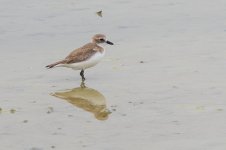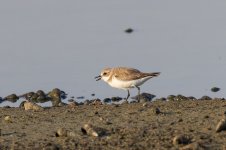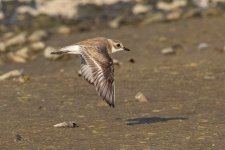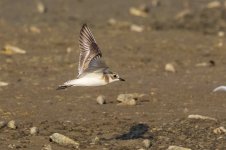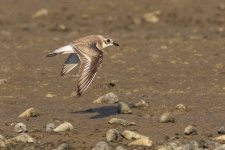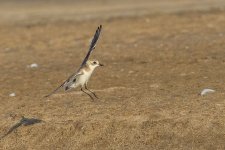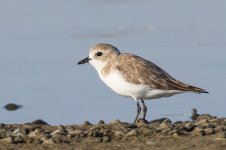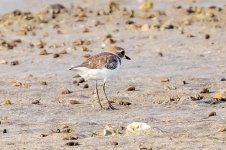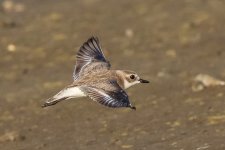michael-ibk
Well-known member
Having little experience with Tibetan (formerly Lesser) and Greater Sand Plover I find telling them apart really tricky. The darkish feet seem to indicate all Tibetan but they could well be just dirty. My flying one does seem to have well projecting legs (indicating Greater?). All birds from Muscat River Mouth. Different individuals, only the BIF shots show the same bird.
